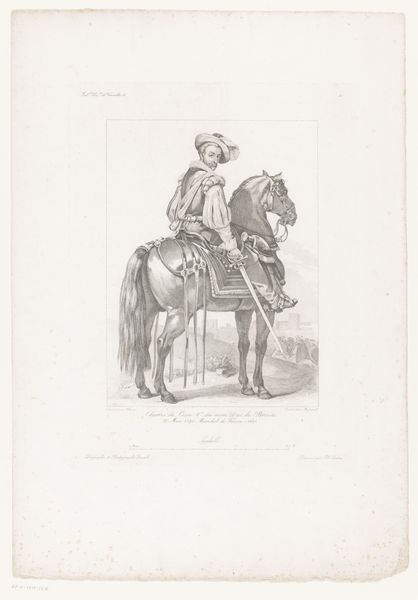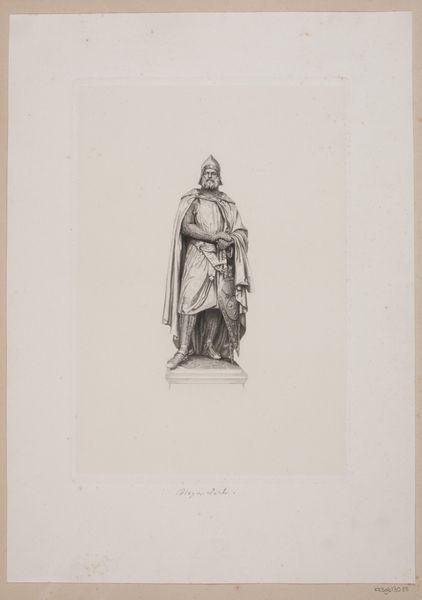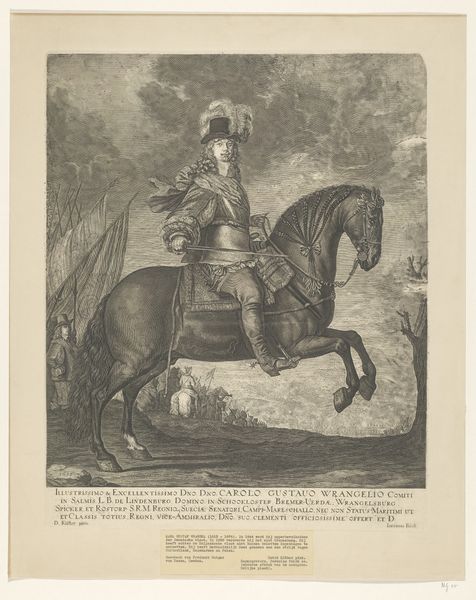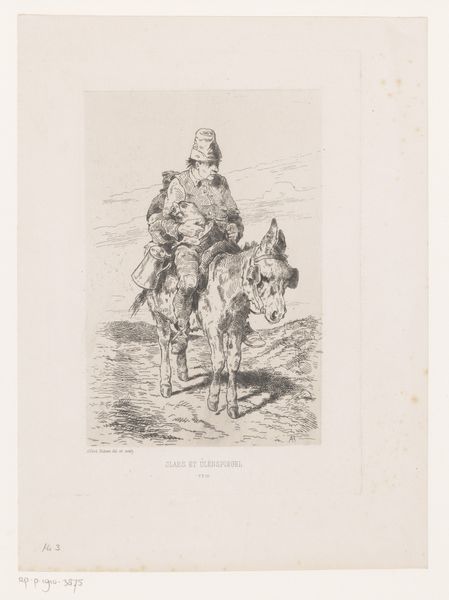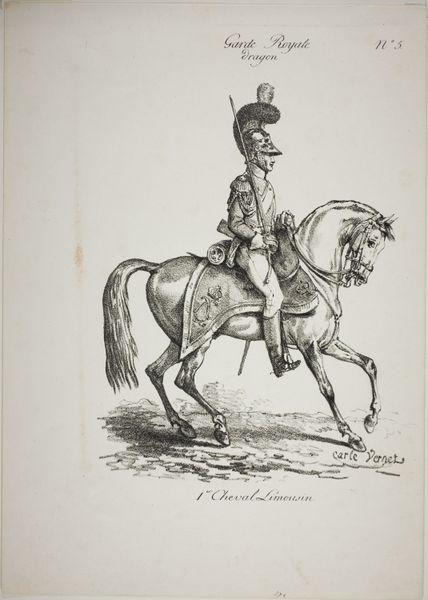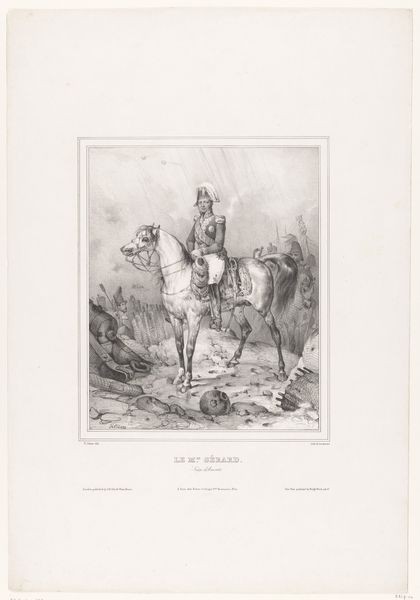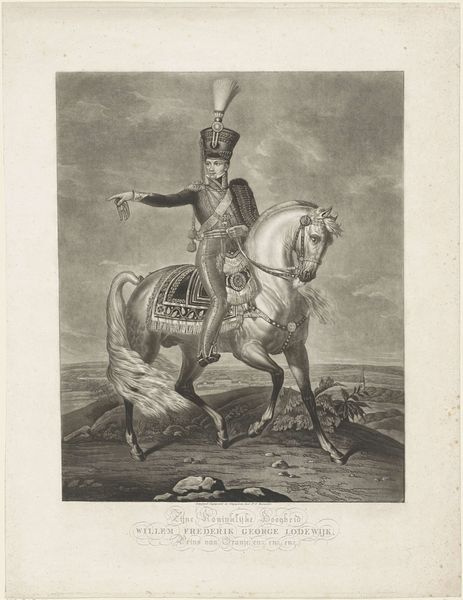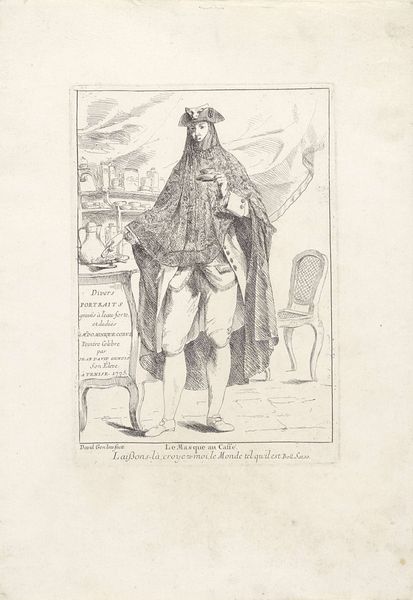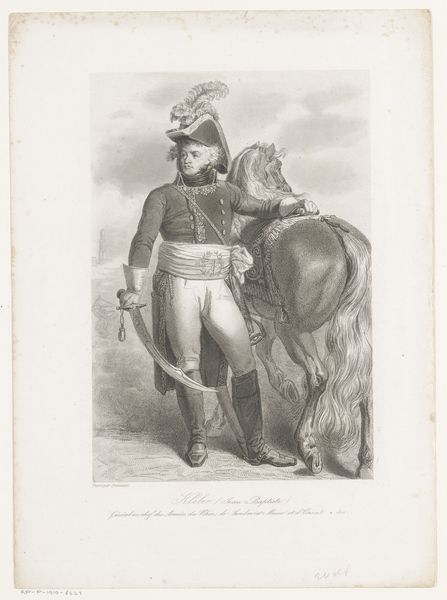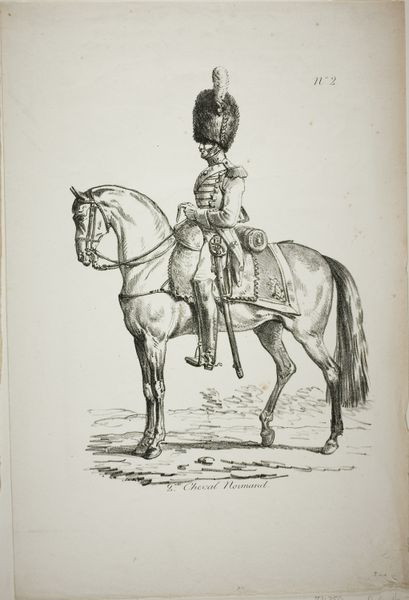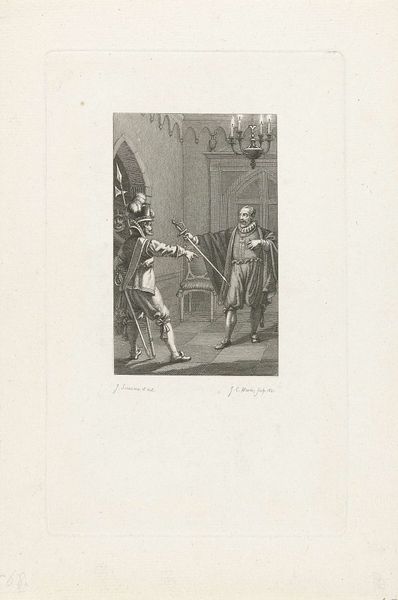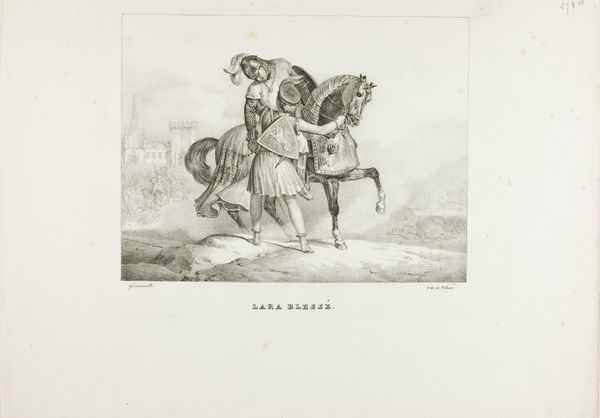
print, engraving
#
portrait
# print
#
history-painting
#
academic-art
#
engraving
Dimensions: height 319 mm, width 238 mm
Copyright: Rijks Museum: Open Domain
Editor: We’re looking at “Portret van Louis de Sancerre,” an engraving from around 1838-1841 by Louis Marie Yves Queverdo. The subject is portrayed on horseback, and it's a very stately, idealized depiction. How do you interpret this work within its historical context? Curator: This portrait is interesting because it's not just a record of someone’s likeness. Queverdo, through this historical lens, taps into the construction of masculine identity and power. We see a visual language reinforcing a specific social hierarchy. What does it mean to represent this figure in this way at this time? Editor: I see him as almost romanticized, like a noble hero, but that makes me wonder who this image was made for. Was it for personal use or a broader public audience? Curator: Exactly. Who gets to write history? Who gets represented, and how? This print, made relatively recently after the subject died centuries before, points to how the French monarchy utilized representations of the past to legitimize its authority. How might such representations mask colonial and imperialistic expansion of the French kingdom? Editor: So, it's not just about preserving a memory, but shaping a narrative? Curator: Precisely. Think about who had access to images like these and who didn't. It tells us a lot about access to power and information at the time, not to mention what virtues or histories are given primacy over others. It can incite discussions about social stratifications across generations, even today. Editor: I never considered how much power dynamics are embedded in a seemingly straightforward historical portrait. It highlights the complexities behind visual representation. Curator: Absolutely! Engaging with art requires considering who benefits from specific visual stories, then and now, and who is actively marginalized or written out of these sanctioned and accepted narratives.
Comments
No comments
Be the first to comment and join the conversation on the ultimate creative platform.
